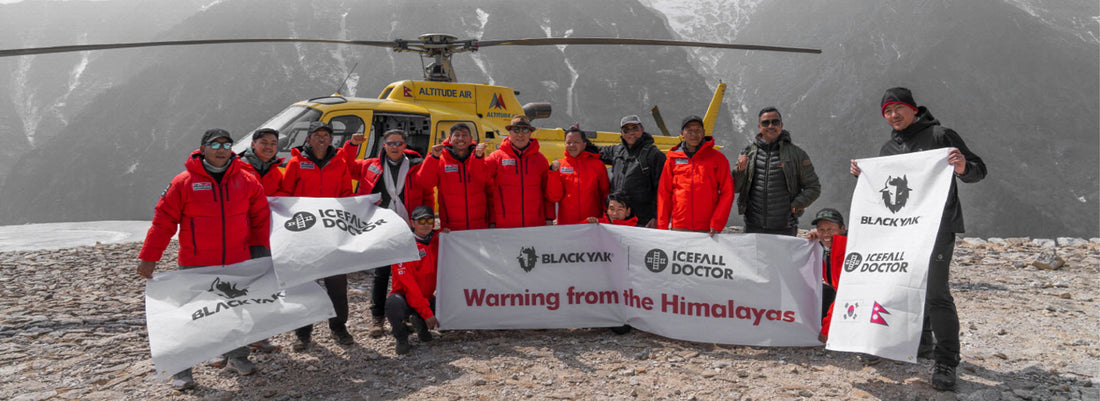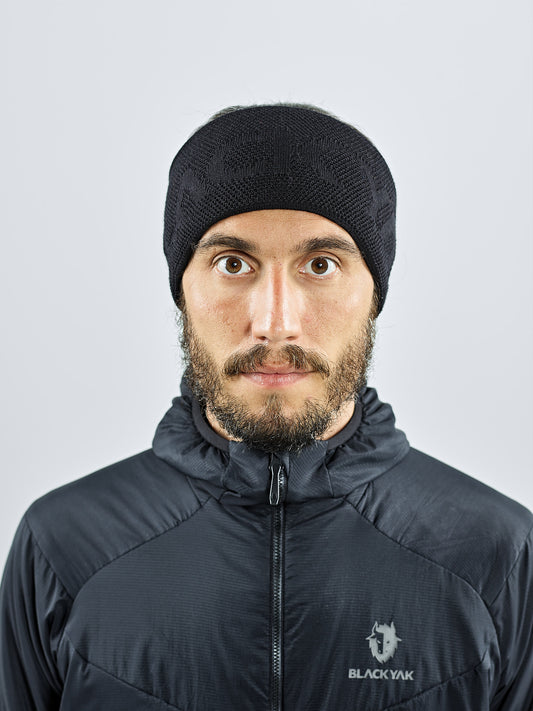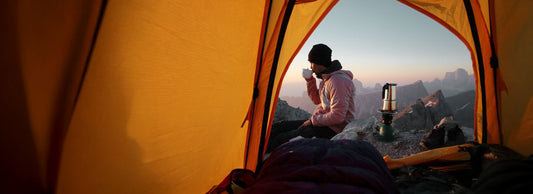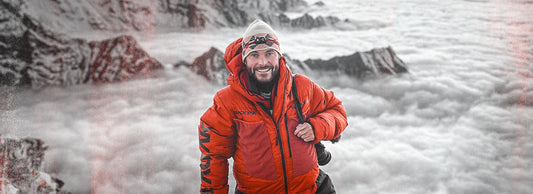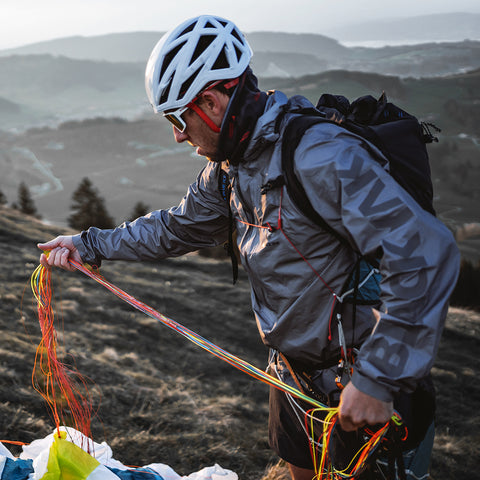At 8848 metres, it is the highest mountain in the world, known in Nepal as Sagarmatha, in Tibet as Chomorangma, and elsewhere in the world as Everest. Ever since Edmund Hillary and Tenzing Norgay Sherpa reached its untrodden summit on 29 May 1953, Everest has remained a symbol of adventurers' dreams and challenges. Their boundless courage and endurance earned them the honour of standing on the roof of the world, and since then, countless mountaineers have followed in their footsteps and continued their journey to the summit. Some have succeeded, but hundreds have never returned. Now, Everest has become more than a national status, it's the ultimate challenge to test personal limits and prove yourself. Every spring and autumn, Everest Base Camp fills up with people who dream of reaching the summit, making it a place of challenge and passion.
Ice Fall
Everest is home to one of the most dangerous areas in the world. It's called the Ice Fall, and it's a place that climbers on Everest have to risk their lives to get through. It hides crevasses of unknown depth, and there is an ever-present danger of avalanches caused by the collapse of seracs. It's the area where the most people have died on Everest and where even experienced climbers shy away. In this dangerous zone, there are people with the most dangerous job in the world: building ladders to cross crevasses and installing safety ropes to keep climbers safe.
Their name is the 'Ice Fall Doctor'
Hailing from Khumbu or the neighbouring Himalayas, like most climbing Sherpas, they are some of the best climbing guides around. Like us, Ice Fall Doctors rely on the Himalayas to provide for their families, but their work goes beyond that of a simple guide. They are veteran Sherpas who have climbed Everest and other 8000+ metre peaks in the Himalayas many times over, and are respected in the region.
Their work takes place at the most dangerous time of year, before other climbers arrive.
Every March, before the world's climbers flock to Everest Base Camp (EBC), they leave their home village of Namche Bazar and begin their journey to EBC - and it's a three-month journey for the most dangerous mission in the world. Because before the world's mountaineers arrive, ladders must be erected and safety ropes set up to safely cross the crevasses of the Ice Fall Zone. Only after the most dangerous work in the most dangerous zone of the world's highest mountain is done, does the back half of the climb to the world's highest peak begin.
 The most dangerous job in the highest place.
The most dangerous job in the highest place.
The dangers for Ice Fall doctors are often real. On 16 April 2014, a year before the devastating earthquake in Nepal, their fate became dangerously real. A massive avalanche, triggered by the collapse of a serac on the western wall of Ice Fall, swept down on the Sherpas working there. Sixteen Ice Fall Doctors and Sherpas lost their lives in the accident. None of the people who died that day were non-Sherpa climbers, in part because Ice Fall Doctors were the first to enter the area at the most dangerous time and place. Their sacrifice is one of the few things that keeps climbers safe on the dangerous Everest climb.
Ice Fall Doctors rescue climbers in danger.
Everest Base Camp attracts hundreds of climbers, many of whom are experienced 8000 metre peak climbers, but many of whom are not acclimatised to high altitude. Some climbers get lost and fall into crevasses, and many climbers run out of oxygen above 8000 metres.
With the recent rise of commercial climbing organisations, the Hillary Staff near the summit of Everest forms long queues. Longer queues mean longer climbing times and climbers use more oxygen, which can lead to climbers running out of oxygen and being in danger. The Ice Fall Doctors are the ones who come to the rescue.
 Ice Fall doctors protect the Himalayan environment.
Ice Fall doctors protect the Himalayan environment.
Everest, like most high mountains in the Himalayas, is plagued by climbing threads. Expeditions pitch many tents at base camp for long periods of time and generate a lot of waste during their stay in camp.
After climbers from all over the world descend, the Ice Fall Doctors climb Everest again - and descend with the rubbish left behind in their camps. Their efforts keep the base camps and routes open to climbers.
Global warming: facing new dangers.
But global warming poses new threats to life in the Himalayas. Even veterans like Norubu Sherpa are concerned in the face of the changing environment. Glaciers are melting, weather changes are beginning to directly affect farming and daily life - these are not just natural phenomena, they are the result of human activity, and they are hitting the Himalayas hardest, with people living the most simple and traditional lives.
The people and Sherpas of the Himalayas try to live in harmony with nature, minimising the use of fossil fuels, but they are the most affected by a global problem that has nothing to do with their actions: global warming. This is not just a Himalayan problem, but a global issue that demands global attention and action.
The story of the Himalayas is not just a story of adventure; it's a story of survival, tradition, and the challenges we all face in the face of a changing global environment. The lives of the Sherpas and their communities in the Himalayas remind us of the importance of living in harmony with nature. The Sherpas of the Himalayas and their lives reflect a unique culture, tradition, and deep connection to nature that is inseparable from the world's highest peaks. More than just mountain guides, they are the centre of their communities, and their courage and wisdom is what drives countless climbers to scale peaks like Everest.
 But environmental changes caused by global warming pose a direct threat to their lives and safety. The changing climate is not only affecting the melting of glaciers, but also agriculture and daily life, creating new challenges for the people of the Himalayas.
But environmental changes caused by global warming pose a direct threat to their lives and safety. The changing climate is not only affecting the melting of glaciers, but also agriculture and daily life, creating new challenges for the people of the Himalayas.
This situation is not just a Himalayan problem, but a global one, requiring international efforts to promote sustainable development and environmental protection. The lives of the Sherpas and their communities in the Himalayas remind us of the importance of living in harmony with nature, and the risks they face are indicative of the seriousness of climate change that the world must face together.
The concerted efforts of the international community and sustainable development strategies are essential to combat global warming and environmental change. The Himalayan way of life and culture offers us important lessons on environmental protection and harmonious coexistence with nature. For this reason, understanding the Sherpas of the Himalayas and their way of life must be approached from a broader perspective, beyond just the sport of climbing, and in the context of global environmental protection and sustainable development. It is time for the world to take notice of the challenges facing communities like the Sherpas of the Himalayas and take concrete action to protect their lives and traditions. The international community's response to global warming must go beyond policy efforts and lead to responsible behavioural change in each individual. When we all work towards environmental protection and sustainable development, communities like the Sherpas of the Himalayas will have a brighter future.
We at BLACKYAK, not only want to honour their essential deeds with words, we believe it is our duty to pay our respect by actively supporting them with the equipment they need to protect themselves as they lead you safely to the top of the world.
"BLACKYAK is very pleased to support the Ice Fall doctors as they are the backbones to Everest climbing," - Kang Tae Sun
By supporting the Ice Fall Doctors and all the people whose livelihoods depend on the Himalayas, and together we can work to combat global warming.
Ice Fall Doctor Sponsored Patches
This patch comes in a set of three. These are the same patches used by the Ice Fall Doctors on Everest.
Each set will donate 8848 KRW, the height of Everest, to the Ice Fall Doctors.
"One for the shoulder, one for the chest, one for the hat Support the Ice Fall Doctors." - J.B. Park

-
YAK LOGO KNIT HEADBAND
The LOGO KNIT HEADBAND made of wool and acrylic is pleasantly soft on skin an...Regular price 30,00 €Regular priceUnit price per

